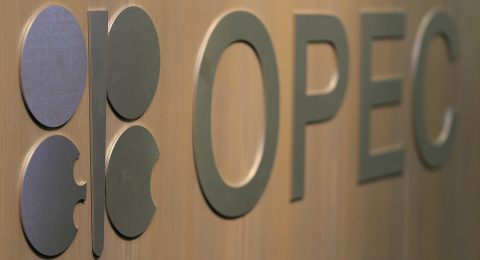The Organization of Petroleum Exporting Countries kept its forecast for 2012 oil demand unchanged, while warning that Europe’s debt crisis could harm global consumption.
Oil use will increase by 1.1 million barrels a day, or 1.2 percent, to 88.9 million a day this year, OPEC said in its monthly report today. The 69-page document made no reference to Iranian threats to block shipping traffic through the Persian Gulf. OPEC’s production rose to its highest level since October 2008, the report from its Vienna-based secretariat showed.
If Europe’s turmoil “were to worsen, the effect on the oil market could be seen not only through a further decline in oil demand in Europe, but also with spillover effects on oil demand in the emerging economies,” OPEC said.
European leaders will this week try to rescue under-fire efforts to deliver new fiscal rules and cut Greece’s debt burden as they urge investors to ignore Standard & Poor’s euro-region downgrades. Brent crude futures traded at $111 a barrel in London today, having gained about 3 percent this year.
OPEC, provider of about 40 percent of the world’s oil, will need to produce 30.1 million barrels a day to balance global crude supply and demand in 2012, estimates in the report showed. That’s up 60,000 barrels a day from its forecast last month. The group set a formal output target for its 12 members of 30 million barrels a day on Dec. 14.
Above Output Ceiling
The group pumped 822,000 barrels of crude a day more than its agreed output ceiling last month as Libya, the United Arab Emirates and Iraq raised production, according to the report. Daily supply from the organization increased to 30.82 million barrels a day in December from 30.65 million in November.
Iranian Vice-President Mohammad Reza Rahimi said on Dec. 27 that the Persian Gulf state may close the Strait of Hormuz in response to a possible embargo against his country’s oil exports. European foreign ministers will meet on Jan. 23 to consider barring purchases of Iranian crude as part of sanctions against the nation’s nuclear program.
Almost 17 million barrels a day, or about a fifth of all oil traded globally, transits the waterway connecting the Persian Gulf with the Gulf of Oman and the Arabian Sea, according to the U.S. Energy Department.
OPEC maintained its prediction for production outside the organization in 2012 at 53.1 million barrels a day. This represents an annual increase of about 700,000 barrels a day, driven by Brazil, the U.S., Canada, Colombia and countries in the former Soviet Union.
OPEC’s members are Algeria, Angola, Ecuador, Iran, Iraq, Kuwait, Libya, Nigeria, Qatar, Saudi Arabia, the United Arab Emirates and Venezuela.
The International Energy Agency would release its monthly report on Jan. 18.
Source: Bloomberg











